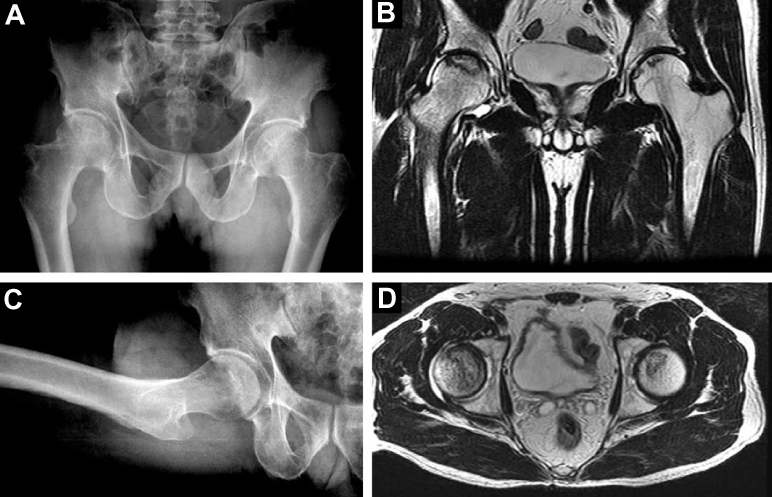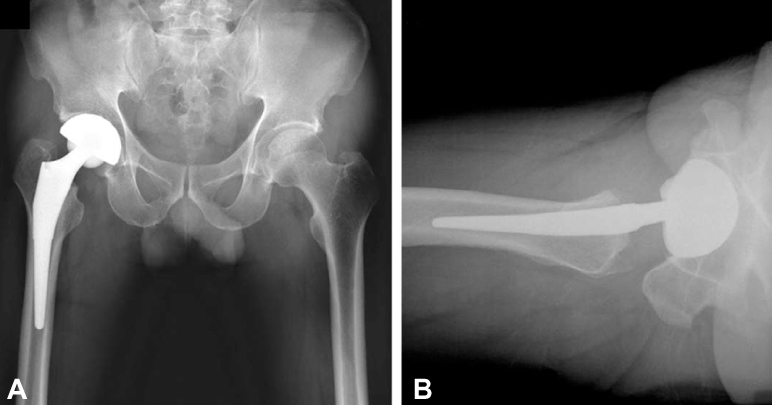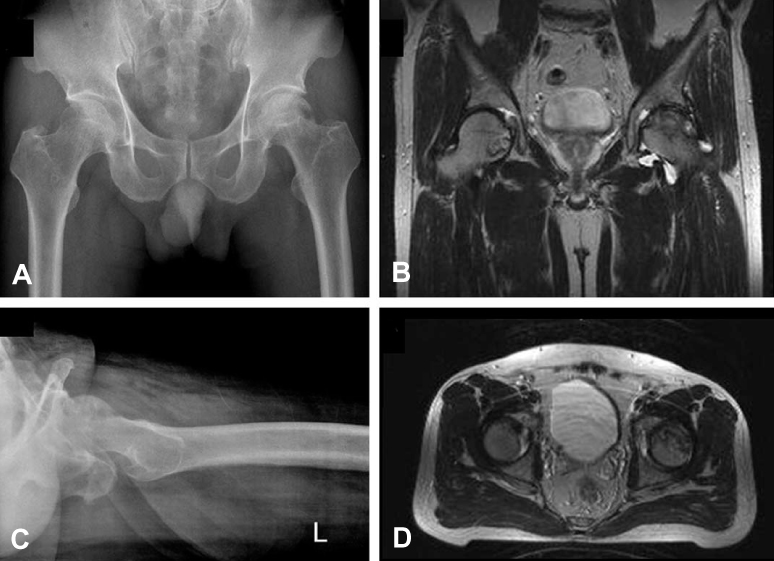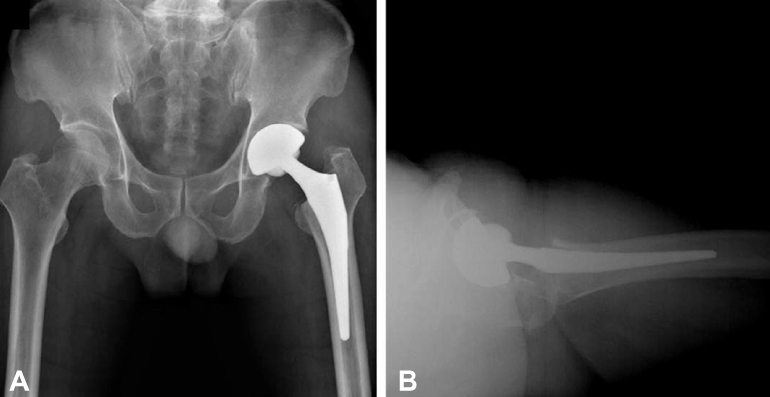J Korean Hip Soc.
2011 Mar;23(1):72-78. 10.5371/jkhs.2011.23.1.72.
Total Hip Arthroplasty in Patient with Osteonecrosis of the Femoral Head Following Liver Transplantation: Case Report
- Affiliations
-
- 1Center for Joint Disease, Chonnam National University Hwasun Hospital, Jeonnam, Korea. tryoon@chonnam.ac.kr
- KMID: 2190779
- DOI: http://doi.org/10.5371/jkhs.2011.23.1.72
Abstract
- Liver transplantation has improved the survival of patients with end stage liver disease. As the rates of success of liver transplantation continue to increase, more patients who have a liver transplant will become candidates for joint replacement due to osteonecrosis. The incidence of osteonecrosis has been variously reported as from 2% to 8.2% after liver transplantation. However, there are only three reports in the English medical literature about total hip arthroplasty for osteonecrosis of the femoral head following liver transplantation, and especially there has not been such a report from Asian countries. We report here on two patients with transplanted livers and who then underwent total hip arthroplasty.
MeSH Terms
Figure
Reference
-
1. Taillandier J, Alemanni M, Samuel D, Bismuth H. Rheumatic complications following liver transplantation. Transplant Proc. 1999. 31:1717–1718.
Article2. Porayko MK, Wiesner RH, Hay JE, et al. Bone disease in liver transplant recipients: incidence, timing, and risk factors. Transplant Proc. 1991. 23:1462–1465.3. Tannenbaum DA, Matthews LS, Grady-Benson JC. Infection around joint replacements in patients who have a renal or liver transplantation. J Bone Joint Surg Am. 1997. 79:36–43.
Article4. Hamburg SM, Piers DA, van den Berg AP, Slooff MJ, Haagsma EB. Bone mineral density in the long term after liver transplantation. Osteoporos Int. 2000. 11:600–606.
Article5. Mehrabi A, Fonouni H, Müller SA, Schmidt J. Current concepts in transplant surgery: liver transplantation today. Langenbecks Arch Surg. 2008. 393:245–260.
Article6. Lee SG. Current status of liver transplantation in Korea. Korean J Gastroenterol. 2005. 46:75–83.7. Papagelopoulos PJ, Hay JE, Galanis EC, Morrey BF. Total joint arthroplasty in orthotopic liver transplant recipients. J Arthroplasty. 1996. 11:889–892.
Article8. Levitsky J, Te HS, Cohen SM. The safety and outcome of joint replacement surgery in liver transplant recipients. Liver Transpl. 2003. 9:373–376.
Article9. Lieberman JR, Scaduto AA, Wellmeyer E. Symptomatic osteonecrosis of the hip after orthotopic liver transplantation. J Arthroplasty. 2000. 15:767–771.
Article10. Goffin E, Baertz G, Rombouts JJ. Long-term survivorship analysis of cemented total hip replacement (THR) after avascular necrosis of the femoral head in renal transplant recipients. Nephrol Dial Transplant. 2006. 21:784–788.
Article
- Full Text Links
- Actions
-
Cited
- CITED
-
- Close
- Share
- Similar articles
-
- Total Hip Arthroplasty for Osteonecrosis of the Femoral Head Following Cardiac Transplantation: A Case Report
- An Enlarged Iliopsoas Bursa Associated with Osteonecrosis of the Femoral Head: A Case Report
- Total Hip Replacement Arthroplasty in Patient with Idiopathic Thrombocytopenic Purpura: Clinical Experience of Perioperative Management
- Arthroplasty in Femoral Head Osteonecrosis
- Total Hip Arthroplasty in Patients with Avascular Necrosis of the Entire Femur





